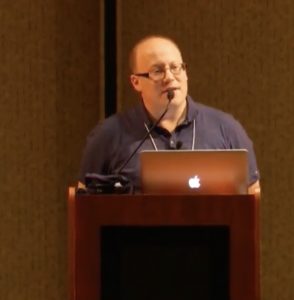 In this video from the Blue Waters 2018 Symposium, Brian O’Shea from Michigan State University presents: Exploring the Universe with Blue Waters.
In this video from the Blue Waters 2018 Symposium, Brian O’Shea from Michigan State University presents: Exploring the Universe with Blue Waters.
“Astronomy, astrophysics, and space sciences are fields that are inundated with data, and involve physical phenomena that are complex and cannot be explored via experiments on Earth. As a result, sophisticated simulation tools are required to make theoretical progress in understanding these phenomena, and large-scale computing is required to both analyze observational data and to execute the necessary simulations. Blue Waters has been one of the forefront instruments for making progress in these fields in the past few years due to both its unique capabilities and its large size. In this talk, I will highlight some of the most important advances made in astronomy, astrophysics, and space sciences using Blue Waters, including a variety of figures and animations contributed by the user community.”
Brian O’Shea received his B.S. in engineering physics at the University of Illinois in Urbana-Champaign (UIUC) in 2000, and his Ph.D. in physics from UIUC in 2005 (with 2002-2005 being spent as a graduate student in residence at the Laboratory for Computational Astrophysics at UC San Diego and in the Theoretical Astrophysics Group at Los Alamos National Laboratory). Following that, he was a Director’s Postdoctoral Fellow at Los Alamos National Laboratory, with a joint appointment between the Theoretical Astrophysics Group and the Applied Physics Division. Since 2008, he has been a member of the faculty at Michigan State University, with a joint appointment between the Department of Physics and Astronomy, Lyman Briggs College, and the National Superconducting Cyclotron Laboratory (assistant professor 2008-12, associate professor 2014-present). O’Shea is a computational and theoretical astrophysicist studying cosmological structure formation, including galaxy formation and the behavior of the hot, diffuse plasma within galaxy clusters. He is also a co-author of the Enzo AMR code, an expert in high performance computing, and an advocate for open-source computing and open-source science. He has authored or co-authored more than 50 peer-reviewed journal articles in astrophysics, computer science and education research journals.




